#prehistoric-news
Text
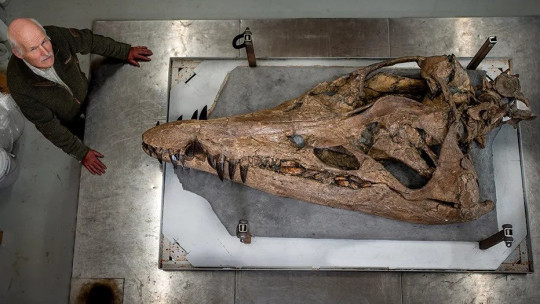
Gigantic Skull of Prehistoric Sea Monster Found on England’s ‘Jurassic Coast’
The remarkably well-preserved skull of a gigantic pliosaur, a prehistoric sea monster, has been discovered on a beach in the county of Dorset in southern England, and it could reveal secrets about these awe-inspiring creatures.
Pliosaurs dominated the oceans at a time when dinosaurs roamed the land. The unearthed fossil is about 150 million years old, almost 3 million years younger than any other pliosaur find. Researchers are analyzing the specimen to determine whether it could even be a species new to science.
Originally spotted in spring 2022, the fossil, along with its complicated excavation and ongoing scientific investigation, are now detailed in the upcoming BBC documentary “Attenborough and the Jurassic Sea Monster,” presented by legendary naturalist Sir David Attenborough, that will air February 14 on PBS.


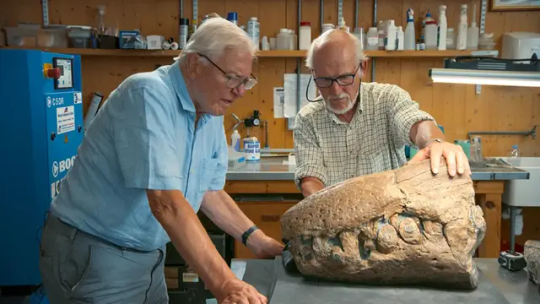
Such was the enormous size of the carnivorous marine reptile that the skull, excavated from a cliff along Dorset’s “Jurassic Coast,” is almost 2 meters (6.6 feet) long. In its fossilized form, the specimen weighs over half a metric ton. Pliosaurs species could grow to 15 meters (50 feet) in length, according to Encyclopaedia Britannica.
The fossil was buried deep in the cliff, about 11 meters (36 feet) above the ground and 15 meters (49 feet) down the cliff, local paleontologist Steve Etches, who helped uncover it, said in a video call.
Extracting it proved a perilous task, one fraught with danger as a crew raced against the clock during a window of good weather before summer storms closed in and the cliff eroded, possibly taking the rare and significant fossil with it.
Etches first learned of the fossil’s existence when his friend Philip Jacobs called him after coming across the pliosaur’s snout on the beach. Right from the start, they were “quite excited, because its jaws closed together which indicates (the fossil) is complete,” Etches said.
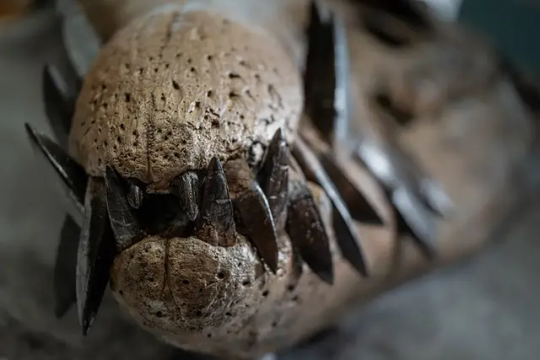

After using drones to map the cliff and identify the rest of the pliosaur’s precise position, Etches and his team embarked on a three-week operation, chiseling into the cliff while suspended in midair.
“It’s a miracle we got it out,” he said, “because we had one last day to get this thing out, which we did at 9:30 p.m.”
Etches took on the task of painstakingly restoring the skull. There was a time he found “very disillusioning” as the mud, and bone, had cracked, but “over the following days and weeks, it was a case of …, like a jigsaw, putting it all back. It took a long time but every bit of bone we got back in.”
It’s a “freak of nature” that this fossil remains in such good condition, Etches added. “It died in the right environment, there was a lot of sedimentation … so when it died and went down to the seafloor, it got buried quite quickly.”
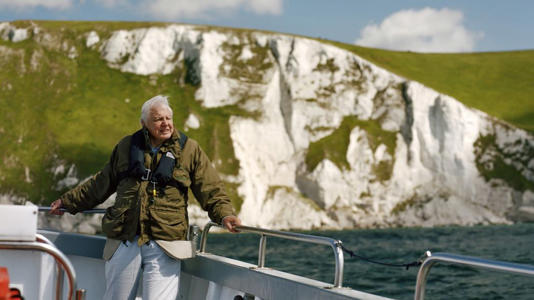
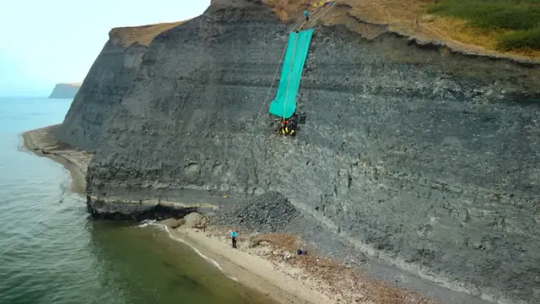

Fearsome top predator of the seas
The nearly intact fossil illuminates the characteristics that made the pliosaur a truly fearsome predator, hunting prey such as the dolphinlike ichthyosaur. The apex predator with huge razor-sharp teeth used a variety of senses, including sensory pits still visible on its skull that may have allowed it to detect changes in water pressure, according to the documentary.
The pliosaur had a bite twice as powerful as a saltwater crocodile, which has the world’s most powerful jaws today, according to Emily Rayfield, a professor of paleobiology at the University of Bristol in the United Kingdom who appeared in the documentary. The prehistoric marine predator would have been able to cut into a car, she said.
Andre Rowe, a postdoctoral research associate of paleobiology at the University of Bristol, added that “the animal would have been so massive that I think it would have been able to prey effectively on anything that was unfortunate enough to be in its space.”
By Issy Ronald.
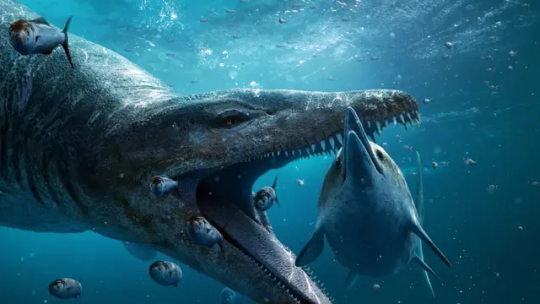
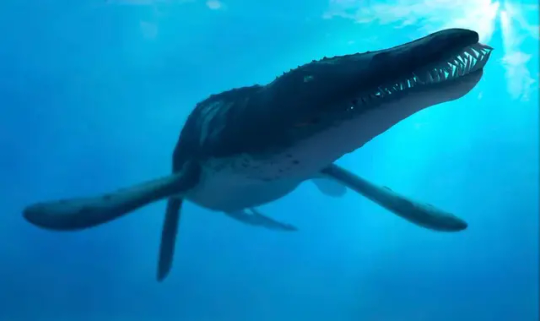
#Gigantic Skull of Prehistoric Sea Monster Found on England’s ‘Jurassic Coast’#Dorset England#pliosaur#jurassic#fossil#prehistoric#dinosaur#paleobiology#palaeontologists#archaeology#archeolgst#history#history news#ancient history#Sir David Attenborough#nature#naturalist
599 notes
·
View notes
Text
Mekosuchus walking in to shallow pond.

Samll and last land crocodile that lived in what is now new caledonia. Realy amazing lil fella.
#art#drawing#paleoart#mesozoic#paleontology#palaeoblr#paleomedia#prehistoric#science#mekosuchus#new caledonia#scifiart#speculative biology
213 notes
·
View notes
Text
#academic interests#marine biology#paleontology enthusiast#megalodon#new research reveals#sharks#prehistoric species#paleontology#womenthatlovescience
108 notes
·
View notes
Text
A new avialan theropod from an emerging Jurassic terrestrial fauna
Published 6th September 2023
A new species of avialan therapod, Fujianvenator prodigiosus, thought to be one of the stratigraphically youngest Jurassic avialan from the Tithonian age of Zhenghe Fauna locality, China.
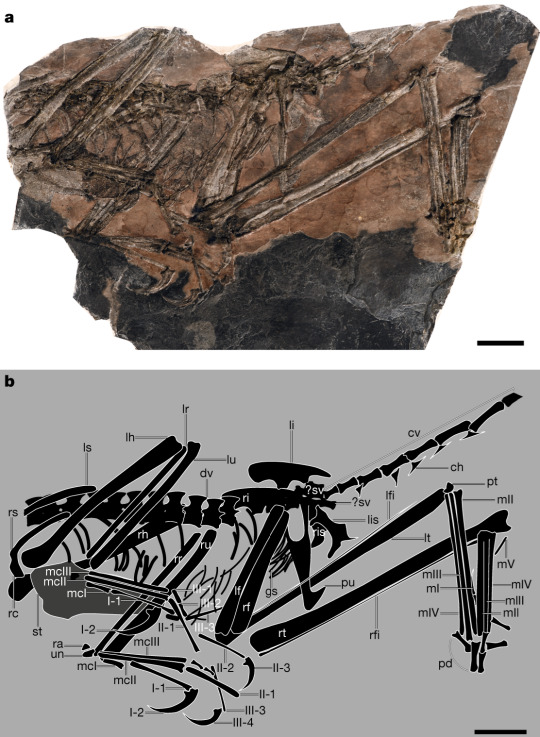
Fujianvenator prodigiosus holotype and detailed line drawing
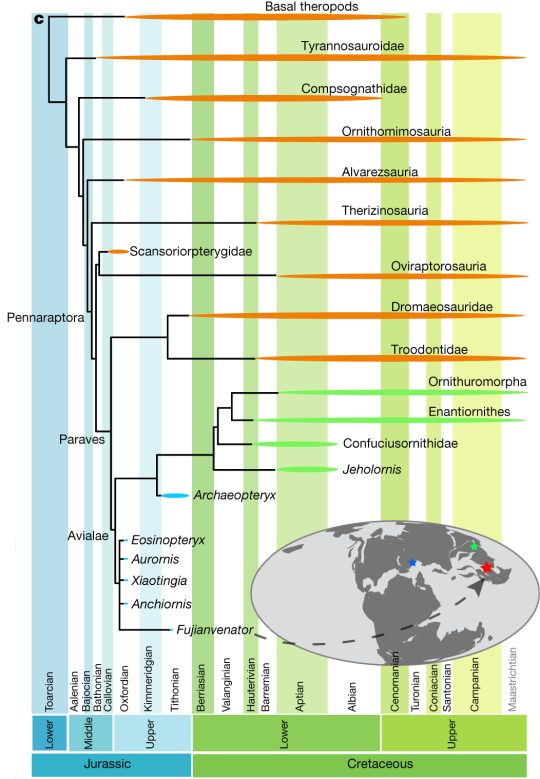
Fujianvenator prodigiosus phylogenetics

Life reconstruction of Fujianvenator prodigiosus, art by Chuang Zhao
source:
203 notes
·
View notes
Text
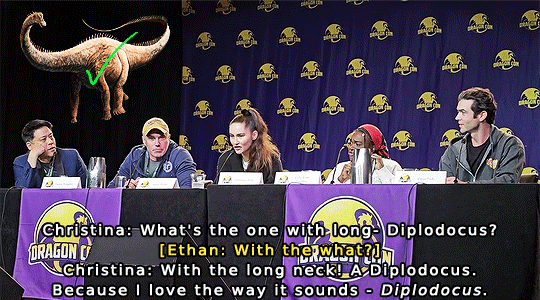





Anson Mount, Christina Chong, Celia Rose Gooding and Ethan Peck + the most important question of the Dragon Con weekend (x)
"What is your favorite dinosaur?'
#star trek: strange new worlds#cast#christina chong#ethan peck#celia rose gooding#anson mount#star trek snw#dinosaurs#my gif#i just loved this okay#Christina saying Diplodocus with her British accent!!!#but Ethan does not know his dinosaurs#love that Anson wanted to be a paleontologist but look at his face#he knew Ethan's answer was wrong#Megalodon - prehistoric? yes. dinosaur? no.#i apologize if the wording is not completely correct#i couldn't understand everything they said and youtube subtitles are just awful#they really need to do a dinosaur episode next season
162 notes
·
View notes
Text
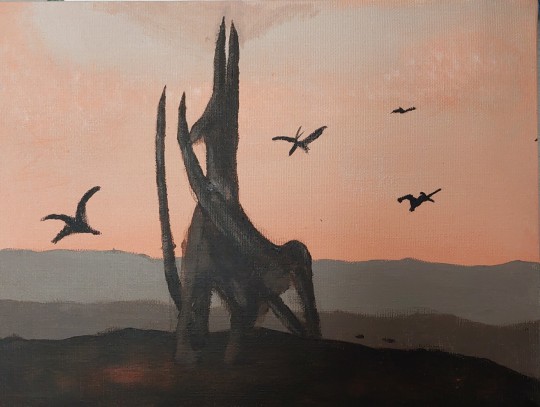
My ainting
#new to tumblr#prehistoric planet#pterosaur#pterosaurs#Nyctosauridae#barbaridactylus#paleontology#paleoblr#paleoart#paleomedia#artwork#painting#artists on tumblr#creature art#my art#art#small artist#acrylpainting#acrylic#acrylart#acryliquepainting#hi#reptile#flying#flight#flying reptile
119 notes
·
View notes
Text


fossil oysters from big brook park, nj - vivitar ps 1-2-3 & 400 speed film - developed at eliz digital & scanned with minolta dimage dual iii
#35mm#fossils#paleontology#natural history#prehistoric#oysters#sea life#sea creatures#nature#new jersey#fossil hunting#grass#trees#botany#zoology#biology#marine biology#marine life#marine animals#ocean life
69 notes
·
View notes
Text
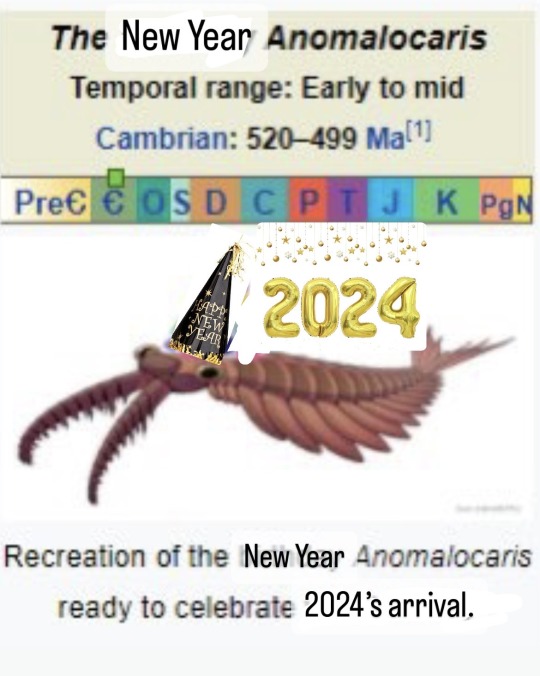
Happy 2024!
#paleontology#paleoblr#cambrian#Cambrian memes#anomalocaris#birthday anomalocaris#prehistoric#new year#2024#happy new year
75 notes
·
View notes
Text

E
#because new episodes of prehistoric planet#my art#transformers#transformers oc#starhawk#rodimus#thunderclash#rodithunderhawk
149 notes
·
View notes
Photo





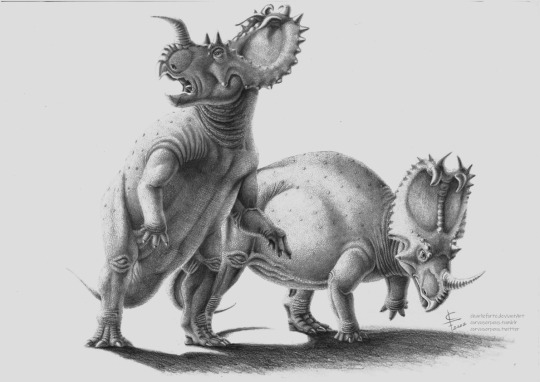


Hello, my name is Carlota (aka Crow here on Tumblr) and I’m an aspiring paleoartist/scientific illustrator who focuses mainly on dinosaurs.
My usual media of choice are watercolor and gouache for colors, and charcoal and graphite for black & white, but I am also proficient in digital illustration even if I haven’t worked on it for a while. I love animals, I love nature and I LOVE lost worlds.
Currently, I’m preparing to finish my Master’s degree in Applied Biology, so please give a Follow to see more of my work while I limbo dance between the Arts and Science!
You can also find me on Bluesky and Twitter. My Ask box is always open and I’m definitely always on board to talk about dinosaurs or anything else you want. Thank you for stopping by and happy blogging!
#palaeoblr#artists on tumblr#paleoart#dinosaurs#scientific illustration#palaeoart#dinosaur art#prehistoric fauna#extinct fauna#my art#needed a new pinned post so SHAMELESS SELF PROMOTION TIME
171 notes
·
View notes
Text
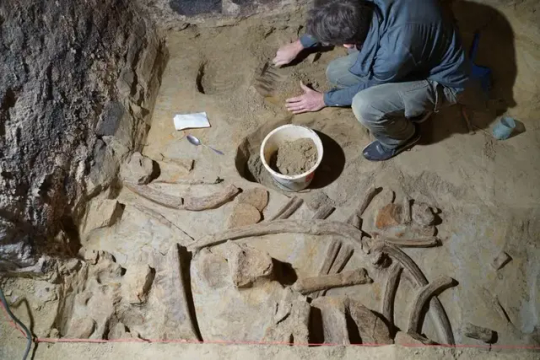
Mammoth Bones Found During Wine Cellar Renovation in Austria
A set of mammoth bones have been discovered in a wine cellar in Austria during renovation works.
The remains, which could represent at least three individual animals, are thought to be between 30,000 and 40,000 years old.
A local winegrower, Andreas Pernerstorfer, made the finds in his wine cellar, which is located in Gobelsburg, in the district of Krems, west of Vienna.
After spotting the bones, Pernerstorfer, reported the finds to the Austrian Federal Monuments Office, which then referred the winegrower to the Archaeological Institute of the Austrian Academy of Sciences (OeAW).
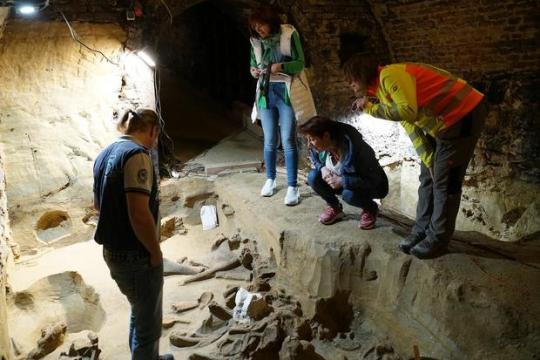
A statement issued by the OeAW described the discovery as the most significant of its kind in the country for more than 100 years.
Archaeologists have uncovered several layers of mammoth bones in the wine cellar, as well as stone artifacts and charcoal. These latter finds helped to shed light on the age of the mammoth bones.
"Such a dense bone layer of mammoths is rare. It's the first time we've been able to investigate something like this in Austria using modern methods," Hannah Parow-Souchon with the OeAW, who is leading the excavation at the wine cellar site, said in a press release.
Around 150 years ago, a similar discovery was made in Gobelsburg. Then, researchers uncovered a thick layer of bones, alongside flint artifacts, decorative fossils and charcoal, in an adjacent cellar in Gobelsburg.

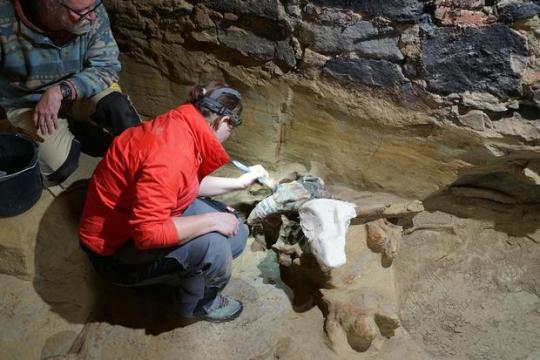
The latest discovery from Gobelsburg could help shed light on how prehistoric humans hunted mammoths.
"We know that humans hunted mammoths, but we still know very little about how they did it," Parow-Souchon said.



Archaeologists suggest that the location where the mammoth bones were found in Pernerstorfer's cellar could be the place where the animals died. It is possible that people chased the creatures into this spot and set some kind of trap for them.
Researchers are currently examining the mammoth remains in an attempt to uncover new insights. The remains will subsequently be transferred to the Natural History Museum Vienna, where the bones will be restored.
By Aristos Georgiou.
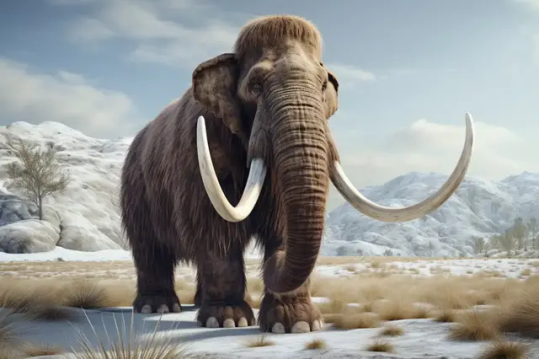
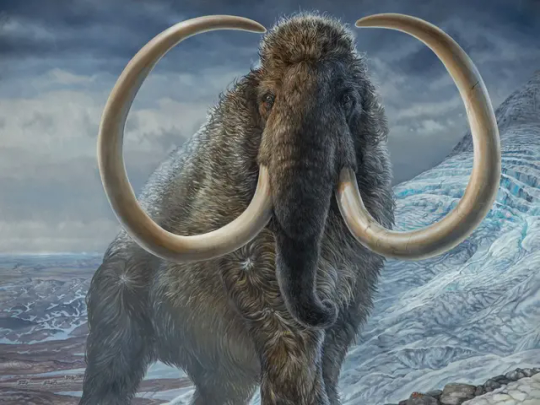
#Mammoth Bones Found During Wine Cellar Renovation in Austria#Gobelsburg Austria#mammoth#fossils#prehistoric#ancient artifacts#archeology#archeolgst#history#history news#ancient history
33 notes
·
View notes
Text
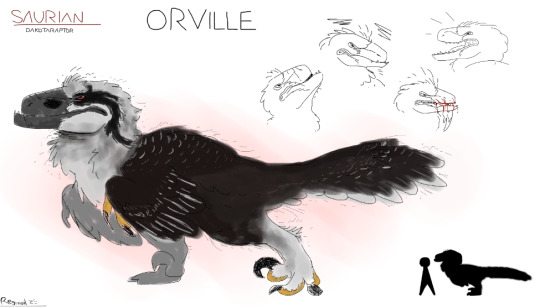

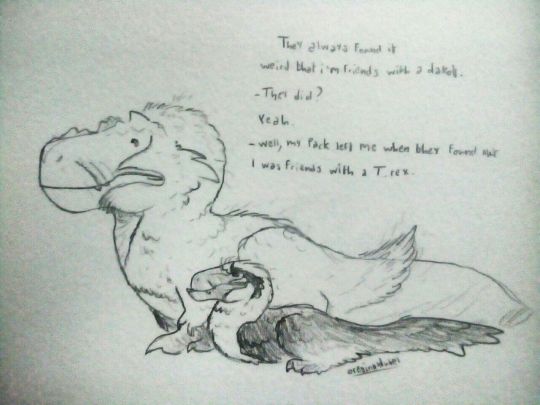
ol men
#dinosaur#paleontology#prehistoric#paleoart#dakotaraptor#raptor#tyrannosaurus rex#tyrannosaurid#saurian#oc#damon#orville#holy shit thats alot of tags for these 2#theyre saurian based ocs i made out of the blue a long time ago#and theyre besties#(not the best timing for orville considering cau's new dakota analysis and the fact that it might be just a deinonychus-sized dromaeosaurid#who knows. its a chimera
107 notes
·
View notes
Text
Paleoanthropology is slowly becoming my new special interest and I have concluded that one major defining trait of our species is the urge to collect cool rocks
#i will die on this hill#new special interest to any neurodivergent: ''it is futile to resist''#not only for toolmaking either#but rather just... idk let me explain#think about it. hominids started making art all of a sudden and it evolved with homo sapiens according to prehistoric records#and this was probably because humans started finding things beautiful??? started experiencing pretty complex emotions???#and the precursor to any artistic talent (of course) is to look at a rock and go ''oo pretty'' and then keep it on your home forever
22 notes
·
View notes
Text
A heavyweight early whale pushes the boundaries of vertebrate morphology
Published 2nd August 2023
Discovery of a new basilosaurid whale, Perucetus colossus, estimated to have the highest degree of bone mass increase known to date - implies Possibly the heaviest animal ever discovered; Perucetus colossus is known from partial postcranial remains of the middle Eocene epoch in Peru.

Skeletal reconstruction and size compared to human

Artist reconstruction of Perucetus colossus, by A. Gennari
Source:
https://doi.org/10.1038/s41586-023-06381-1
133 notes
·
View notes
Text

#dinosaurs#psittacosaurus#fossils#fossil#cloaca#dinosaur#dinosaur news#dinosaur sex#dino sex#paleontology#prehistoric
159 notes
·
View notes
Photo

New dinosaur alert! Presenting Mbiresaurus raathi
Image ID: A digital illustration of the early sauropodomorph dinosaur Mbiresaurus. It is a slender, two-legged dinosaur with a long neck and tail and a body covered in fluffy feathers. The feathers are brown with lighter speckles that turn into stripes on the tail. The head and neck are wrinkled and featherless except for a few long feathers that hang from the base of the neck. The head and neck are coloured with patches of black and white, and an orange lower jaw. The Mbiresaurus is posed in a rough three-quarter view, facing to the right and away from the viewer. The neck is upright and alert, the mouth is slightly open, one foot is raised off the ground and the tail is curved around in front of its legs. End ID.
A newly-described species from Zimbabwe, Mbiresaurus is now the oldest named dinosaur species from Africa! It’s an early sauropodomorph, related to dinosaurs like Eoraptor and Buriolestes, and was probably an omnivore.
Mbiresaurus comes from a new fossil site in Zimbabwe, which contains a whole lot of other species that have yet to be described, including a herrerasaurid, which I’ve represented in this size diagram with Staurikosaurus.

Image ID: A size chart showing Mbiresaurus and the early carnivorous dinosaur Staurikosaurus next to a light grey silhouette of a person. The Mbiresaurus’ head is level with the person’s upper thigh, and the Staurikosaurus’ head comes to approximately waist height. End ID.
The formation also includes a number of synapsid species, a rhynchosaur, and an aetosaur, a group of armoured herbivorous crocodile relatives that had never been found in southern Africa before! When combined together into Pangaea, the location of the fossil site matches the latitude of other Late Triassic early dinosaur sites, suggesting that dinosaurs and other Late Triassic species initially migrated across a similar climatic band that would eventually become South America and southern Africa.
#dinosaurs#paleoart#paleontology#new dinosaur#palaeoblr#mbiresaurus#sauropodomorph#triassic#fossils#prehistoric
593 notes
·
View notes